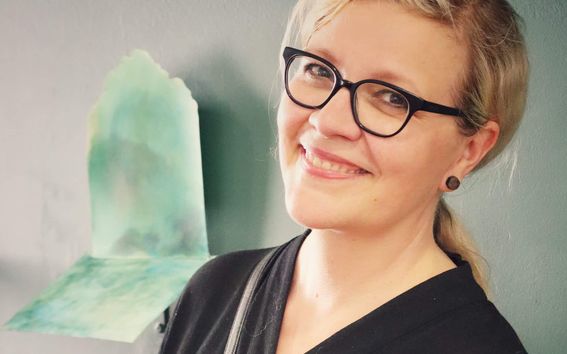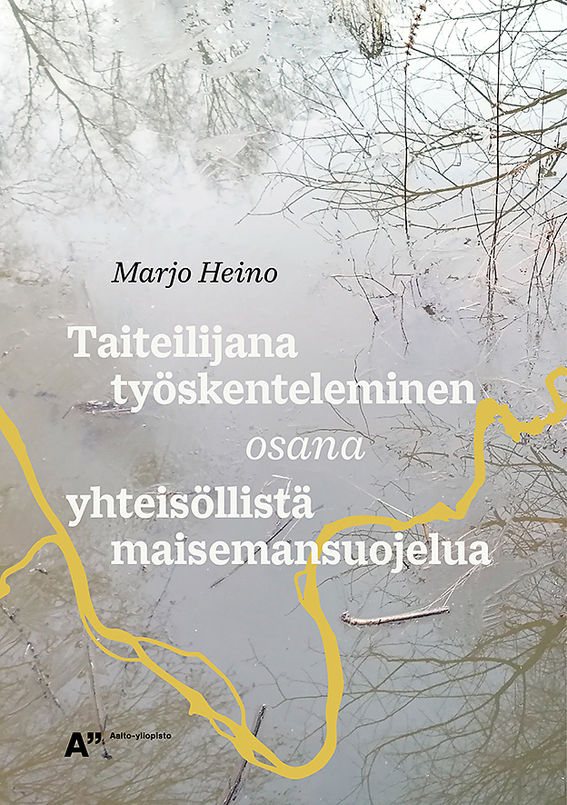Marjo Heino: ‘Art has the ability to reach and strengthen communities and create meanings’

What is your research about?
‘The framework of this dissertation is the project entitled Conservation of the rural cultural landscape of the Kokemäenjoki river and artistic development, that ran from 2017 to 2019. I worked as an artist-researcher of the project and as a regional artist, coordinating the participatory art processes. The two-year project was funded by the Kone Foundation and managed by the Department of Landscape Studies at the University of Turku.
The project combined landscape research and art. The aim was to explore the perceptions of communities and residents along the Kokemäenjoki river about the river landscape, its values and everyday life. I carried out several art projects related to the river and in collaboration with the communities living along the river.
The central idea of my research is that artists' work is in a constant state of flux and that their operating environments are expanding. Art and artists do not stay in their familiar roles, but fluidly slide into other areas as well. Through my own artistic work, I wanted to explore the possibilities that artistic work creates.
In the future, I would also like to see where the work of an artist could extend and expand, especially if one’s own art-making was also included in these job descriptions. Artists' work could be a natural part of, for example, urban planning, nature conservation, education or the care environment.’
What is important about it?
‘Collaboration with my co-worker in the Kokemäenjoki river valley project, landscape researcher Vuokko Kemppi-Vienola, involved a lot of brainstorming and experimentation in selected places and communities along the river. The intertwining of our fields gave birth to a combination of working methods, a collaborative landscape conservation. The idea behind it is that art can strengthen communities’ own experience of the environment and get them to act, seek knowledge and take an interest in protecting their own habitat.
I felt it was important for the participants to be able to participate in the artistic process. According to my observations, the merit of art was experiential – it reached out to communities and fostered a sense of community.
I collaborated with other artists and a wide range of different organisations. My own identity as a visual artist was challenged, and I also found myself as a community artist. I believe that my research also articulates themes that are important to other artists, as well as the starting points for being a community artist.’
Marjo HeinoArtists' work could be a natural part of, for example, urban planning, nature conservation, education or the care environment.”

What can it lead to?
‘The work of an artist has the ability to bring together very different things. According to my research and experience, art has the ability to reach out to communities, strengthen the sense of belonging, deepen discussion and create meanings. Thanks to the work of art and artists, the Kokemäenjoki river valley project has created an extensive cooperation network.
Working as an artist also resulted in encounters, experientialism, community, listening and dialogue – all very important and desirable elements when working with people and exploring the shared environment.
Of course, each project has different artists, different communities and its own challenges, and cannot be replicated as such, but my research encourages the use of art more widely. In conclusion I encourage other hybrid projects to trust in artists and art’s capacity to delve deeper into the processes.’
Marjo Heino defended their PhD thesis Working as an artist as part of participatory landscape conservation at Aalto University on 3 February 2023.
Contact:
Marjo Heino, School of Arts, Design and Architecture, [email protected]
- Published:
- Updated:
Read more news

DeployAI Partners Gather for Heart Beat Meeting in Helsinki
The European DeployAI project's partners gathered for the Heart Beat meeting hosted by Aalto University Executive Education in Helsinki.
Get to know us: Associate Professor Maria Sammalkorpi
Sammalkorpi received her doctorate from Helsinki University of Technology 2004. After her defence, she has worked as a researcher at the Universities of Princeton, Yale and Aalto.
Aalto computer scientists in ICML 2024
Computer scientists in ICML 2024